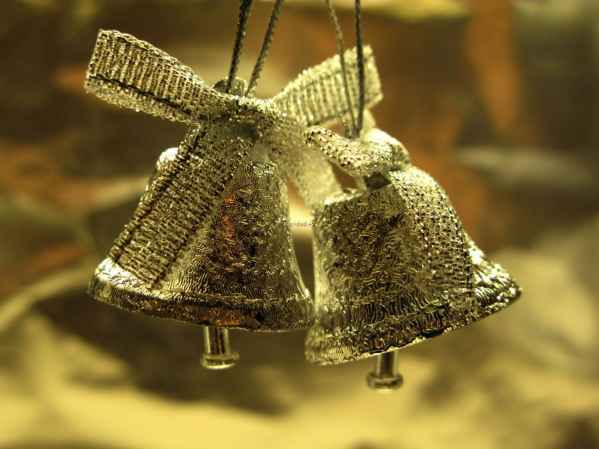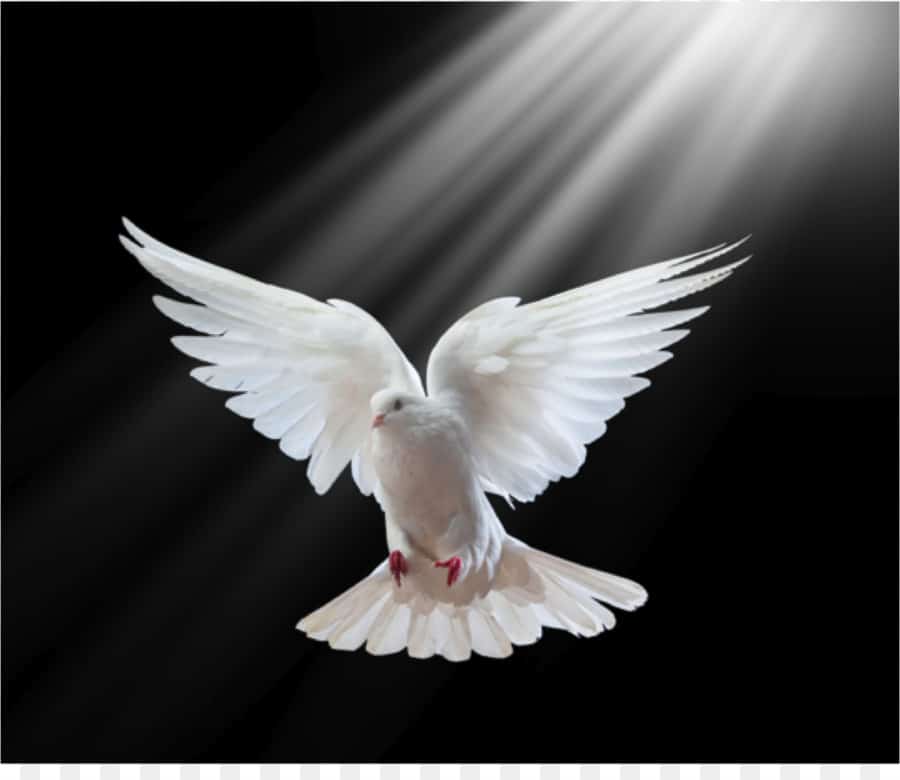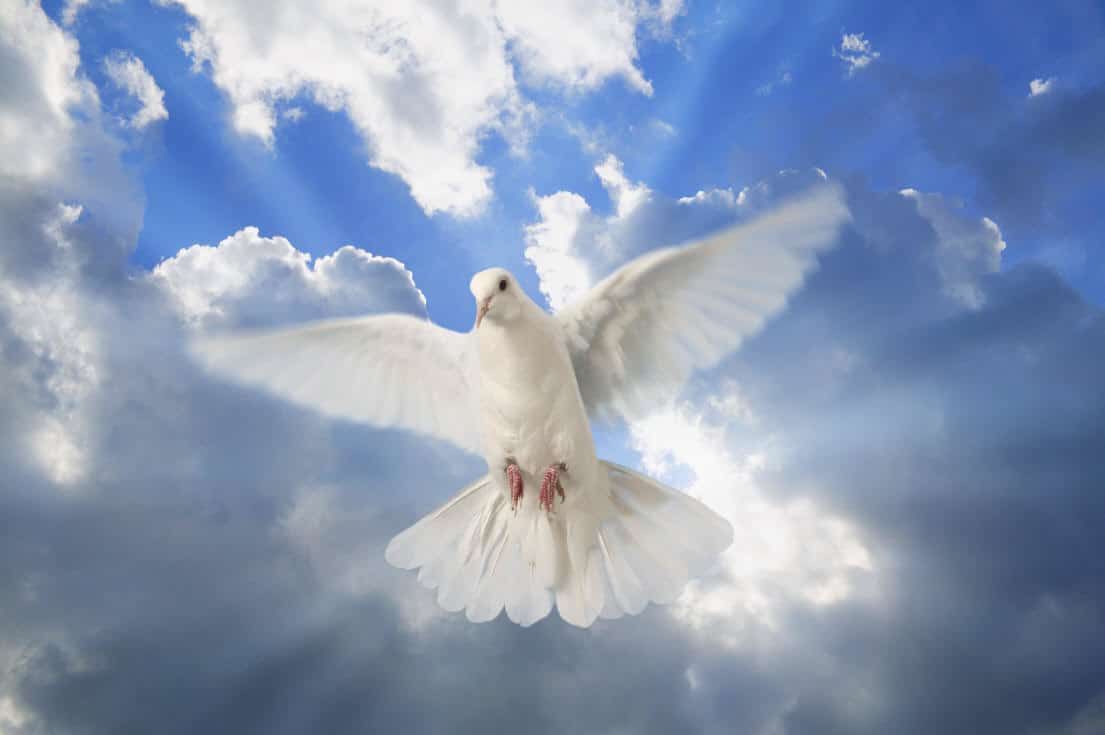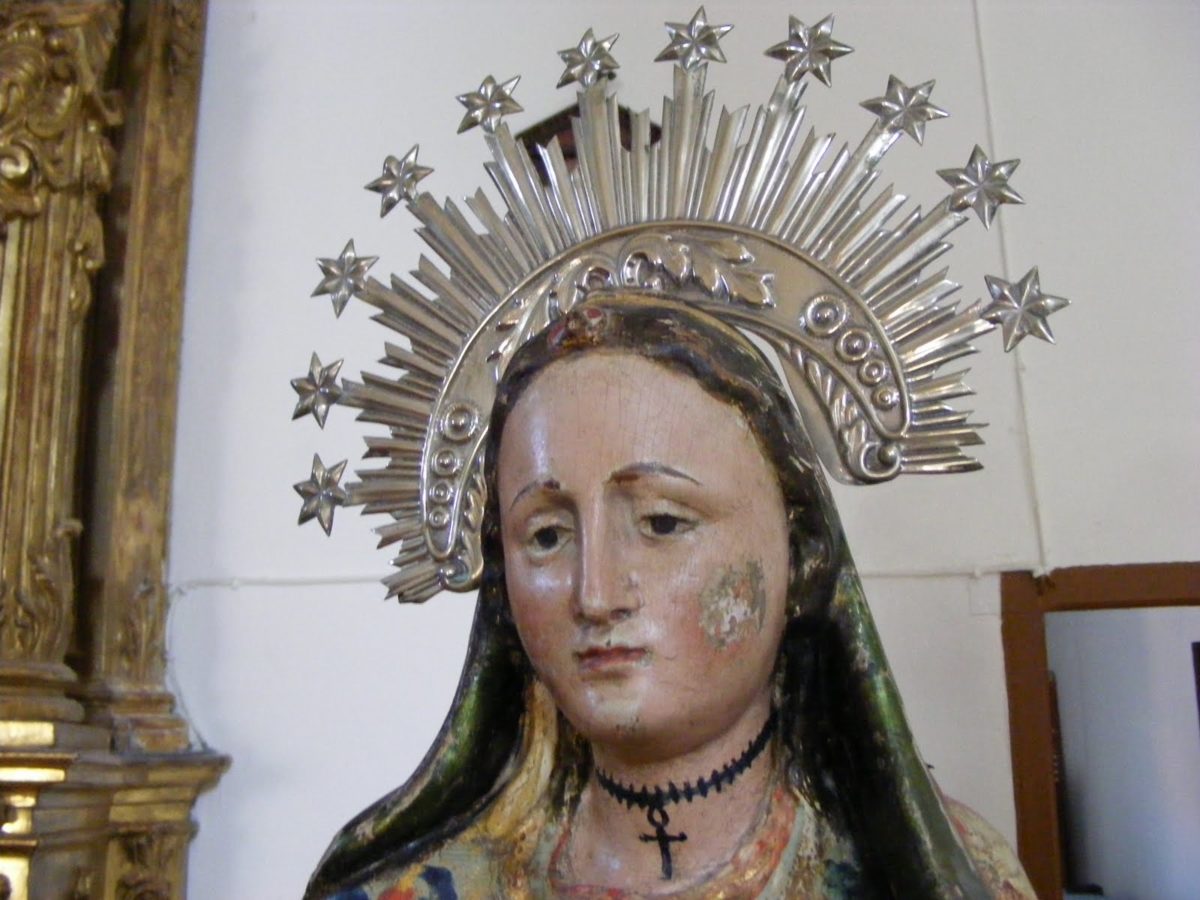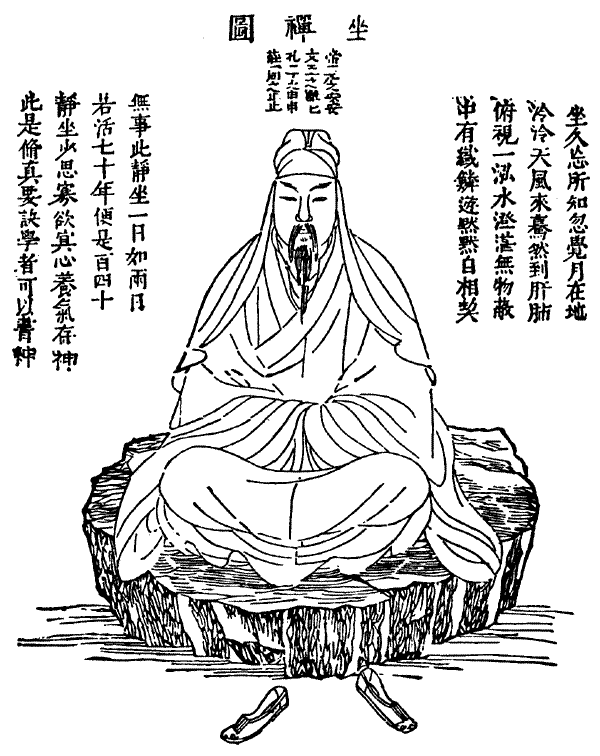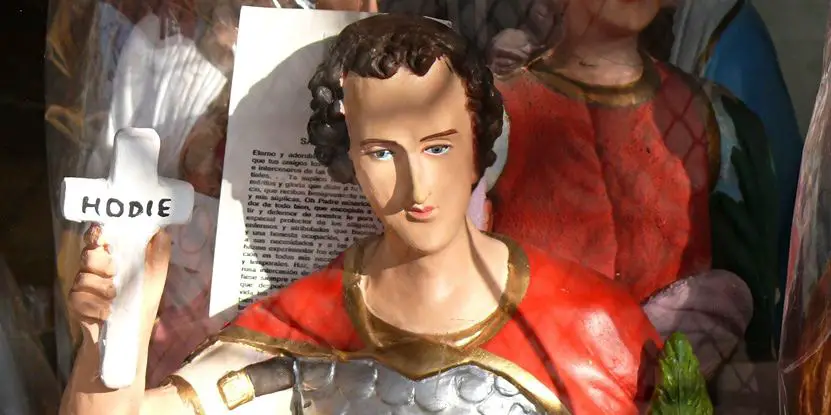There are many religions practised by people around the world. Each religion has its own way of representing itself, and I am referring to the set of symbols they use to represent an ideal, a character or an event that happened within their religion. Today we are going to talk a little about Christian symbols.
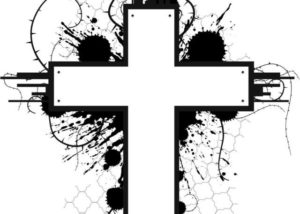
Meaning of Christian Symbols
Christianity is one of the most practised religions in the world today, and it is estimated that its increase continues to grow both in believers and popularity, which places the Christian religion as the most practised religion in the world.
Many are the speculations about the beginnings of this religion, the genesis of the same happens since God exists, although the term Christian came hundreds of billions of years later, which could mark that point as the origin of the same (see also: Christian Marriage).
However, if we briefly analyse the Bible, we can see that even before the coming of Jesus there were people who firmly believed in God and lived according to His commandments, which means that these people were Christians, although at that time they were called “servants of God”, a term that is still used.
It is an ancient and millenarian religion because it is a very old religion, as old as the religion of Zoroaster, although the religion of Zoroaster is considered to be one of the first in the history of the world, the truth is that Christianity has many similarities with that of Zoroaster.
At least, this is what historians who study the origins of religions say, and since Christianity is such an ancient religion, it has taken certain symbols from other religions and created its own to praise or please God.
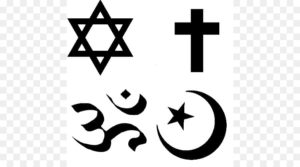
These symbols have a close relationship with the faith they profess, representing a specific fact or event that has happened, or simply being used to refer to God or Jesus Christ, and thus being able to convey to the world this message of salvation through a symbol.
In the history of the Bible, there were events that in some way “marked” the destiny of humanity, these events were recorded in the Great Book and the Christians of the time decided to make a graphic representation that would refer to and remind them of these critical moments.
A good example of this type of symbol is the cross itself with Christ crucified, it is the graphic representation of what happened at that time to the Saviour of the world, who was finally crucified for the forgiveness of the sins of mortals.
So normally people carry a cross to commemorate those days when the God who made man was killed by man, but nevertheless his mission on earth was to die so that all those who believe in him might have eternal life.
This is one of the most famous symbols in the world, the cross, but there are a variety of Christian symbols beyond the cross, such as the controversial fish that some believe Christ himself drew on the ground when those men wanted to stone the harlot. However, there are many detractors who claim that he did not draw a fish.
The Fish
The Fish symbol is also known as “Ichtus” or “Ishthys” and is basically a Christian symbol formed by two intersecting arcs that cross as they descend to the right, forming the shape of a fish, the symbol we were talking about earlier.
The word ichtus comes from the Greek and is written ἰχθύς (ikhthýs), which means fish. In capital letters it is written ΙΧΘΥΣ. Normally this group of five letters appears inscribed within the symbol as such, i.e. the fish, this happens because the letters form the following acronym:
- Ι (Iota): the initial letter of the word Ἰησοῦς, which means Jesus.
- Χ (Chi): the initial letter of the word Χριστός, which means Christ.
- Θ (Theta): The initial letter of the word Θεοῦ, which means God.
- Υ (Upsilon): The initial letter of the word Ὑἱός, which means Son.
- Σ (sigma): The first letter of the word Σωτήρ, whose English translation is Saviour.
If we then take all the letters and understand their meaning, we realise that the acronym means: “Jesus Christ, Son of God, Saviour”. We could say that this would be the origin of the fish symbol based on the information of the fish translation written in capital letters.
So far it is known that the “Ichtus” or “Ishthys”, better known as the fish symbol, was a secret symbol used by the first Christians in the world. It is important to note that the fish is also a recurring element in the Gospels, that is, it is mentioned in all four Gospels of the Bible. The first appearances of this symbol date back to the second century and it seems that its use increased during the third and fourth centuries. Nowadays this symbol has become popular again to be identified with Christianity.
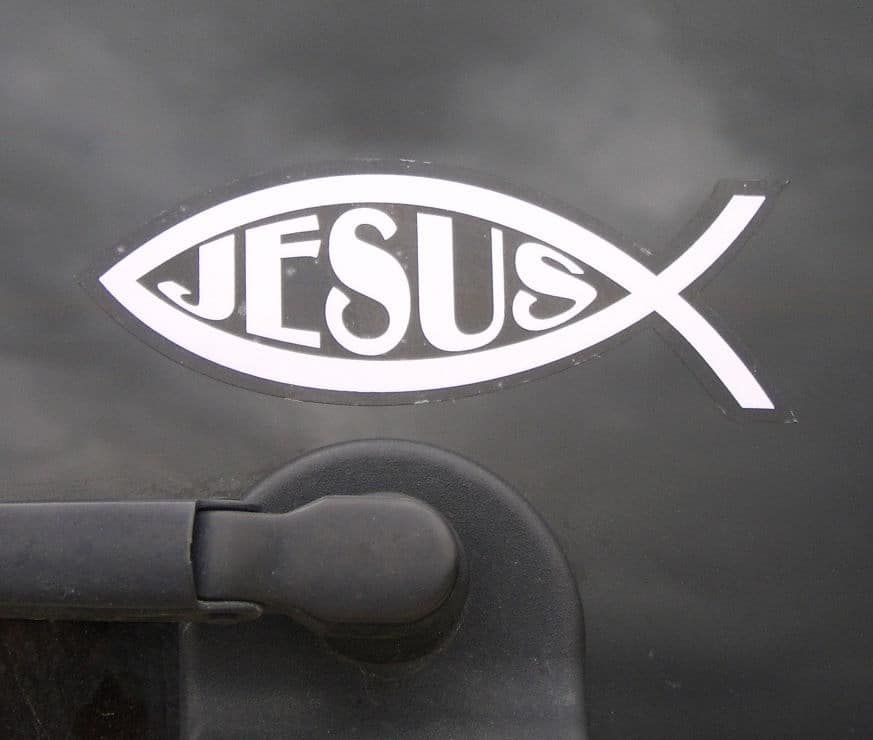
The anchor
Christians have always had the hope of a life beyond this life and beyond death itself, something promised by the very God in whom they believe, a life beyond death, and they have God’s promise that if they are faithful to His commandments in this life, they will be able to attain that eternal life.
These same Christians then dedicate their lives to following the instructions to the letter, always hoping that their efforts not to sin and not to be carried away by the things of this world will bear fruit in the end and that they will enter Paradise and thus eternal life.
This inexhaustible hope that some Christians have in God, in this life promised by God, in this land free from sin, from corruption, from the unclean, is also represented by a symbol, this symbol is a kind of anchored cross.
The anchor has always been a symbol of security, that is why the first Christians used this symbol as a symbol of hope in the future existence and resurrection, in the life beyond this and death itself, in a holy place promised by God.
The anchor symbol is also related to other maritime symbols such as the Ichthys or the fish symbol of Jesus Christ. Don’t be surprised if at some point in your life you see the two symbols together, the anchor and the fish, they go hand in hand. It was also common to use the anchor symbol to disguise the Latin cross symbol. This type of symbol is known as an anchor cross and is a kind of disguised cross.
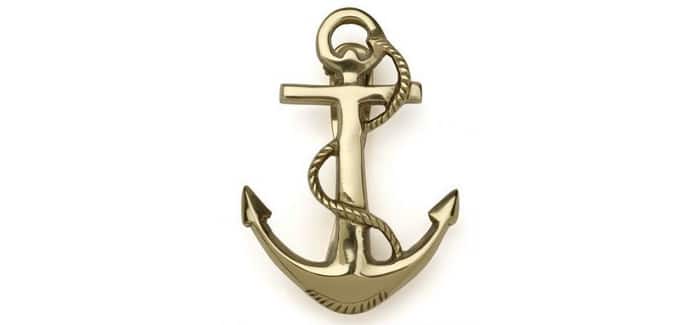
Technically, the person holding this symbol wants to tell the whole world that they are a Christian, that Jesus is their Saviour, and that they believe in the promise of God the Father to take them to a holy land, and also that He will fulfil the promise of eternal life for those who remain faithful to Him in this world.
The Cross
Within Christianity, the cross is one of the most important and emblematic symbols of the religion, because we’re reminded that Jesus Christ died on a cross. So it is a way of remembering that painful moment, which in turn was a sacrifice for the redemption of mankind. Let us now look at the symbols most used by Christians in the form of the cross:
The Christian cross: First of all, we have the Christian cross, the cross on which Jesus Christ was crucified. This cross is the main symbol of Christianity. In its simplest form, it consists of two lines, a long vertical one and a horizontal one that crosses it just above the centre. This symbol is used in Christianity as a clear reference to the cross on which Jesus Christ died.
The symbol of the cross was not used by the early Christians because the cross did not exist at that time and the death of Jesus Christ on the cross happened much later. Also, the cross is a direct reference to the methods of execution used in later times. Instead, it was more common to use symbols such as the ichthys (the fish). The cross appeared in the 2nd and 3rd centuries and became clearly associated with Christianity.
It is important to note that in Christianity there were already variations of the cross used with religious meanings. For example, the cross had been used in Egyptian civilisation or by followers of Hinduism (see also: Origin of Christianity).
There are different versions of the Christian cross, variations associated with different branches of Christianity. The most common in the Catholic Church is the Latin cross, which consists simply of two lines, a long vertical line and a horizontal line that intersects it above the centre. The Orthodox Church, on the other hand, uses the eight-armed cross.
The inverted cross: The inverted cross, also known as St Peter’s cross, has the same shape as the Latin cross, but in this case the cross is upside down. This symbol has its origins in the crucifixion of the Apostle Peter.
Let us remember that when the Apostle Peter was about to be crucified by the Romans, he felt that he was not worthy to die like Jesus Christ. So he asked the Romans to crucify him in an inverted position. Because of this event, the inverted cross has always been used by Christians as a symbol of humility.
There is a small controversy about this variation of the cross, because the followers of Satan usually use an inverted cross as a symbol, and what they want to convey with the symbol of their inverted cross is that they are against the Christian statutes. So Christians use the inverted cross as a symbol of humility, while Satanists use it to make the point that they do not agree with Christianity.
The Jerusalem Cross: The Jerusalem Cross, or as it is also known, “The Cross of the Crusades” or “The Cross of the Holy Land”, is a historical symbol of Christianity, as it was the cross used in the Crusader wars almost 1000 years ago.
The Crusader cross is made up of five other crosses. There is a central cross with straight finials at the ends, and this cross is accompanied by a smaller Greek cross in each quadrant of the main cross. These smaller crosses are called crucifixes.
There have been many and varied interpretations of this cross over the years, but one of the most accepted is that the main cross represents Jesus Christ, while the four crosses represent the four Evangelists. It is also possible to interpret the five crosses as the five wounds suffered by Jesus Christ when he was crucified.
The Lamb
The symbol of the lamb is another of the most representative Christian symbols of the religion, because Christ is related to the lamb that had to be sacrificed for the forgiveness of the sins of mortals. It is also said that Christ is our shepherd and that Peter told him to feed his sheep.
The symbolism of the lamb is not of the present, and in fact there are certain biblical indications that God’s plan for a sacrifice was to be realised in the future, i.e. many theologians claim that the origin of the symbol is from the time of Adam and Eve and is related to the first sin.
Let us recall that when Adam and Eve were in the Garden of Eden, there were two trees whose fruit was forbidden, and Lucifer, disguised as a serpent, thought that Eve should eat the fruit of one of these two trees.
The trees whose fruit was forbidden by God were the tree of the knowledge of good and evil and the tree of eternal life. Lucifer thought that Eve should eat of the fruit of the tree of the knowledge of good and evil, and she did.
God had said that if they ate of the fruit of the tree of the knowledge of good and evil they would surely die; ignoring what God had said and following the serpent’s words, Eve ate and fed her companion, Adam.
It is thought that, according to what God had said, both should have died when they ate of that fruit, but neither died, instead God took the life of a lamb and used its skin to clothe the couple. If we understand a little, this is a reference to the sacrifice that Jesus Christ would make as the chosen lamb who died on the cross for the forgiveness of sins. From this, theologians conclude that this symbol is indeed ancient, because of this event.
Crimson
The Crimson Symbol, also known as the Chi Ro, is one of the first Christograms to appear in Christian history, it is formed by the first two letters of the Greek word Christ, ΧΡΙΣΤΟΣ, the letter Chi (X) and the letter Rho (P).
The first time this symbol was used was in the 4th century AD by the Roman Emperor Constantine I, he used the symbol on his war standard. It is common to see this symbol accompanied by another of the most important Christian symbols, the Alpha and Omega.
After the use of the symbol by Constantine I, the symbol continued to be used and became increasingly popular with the armies of ancient Rome, on the battle standards the symbol was clearly seen by the enemies who immediately associated it with the Christians.
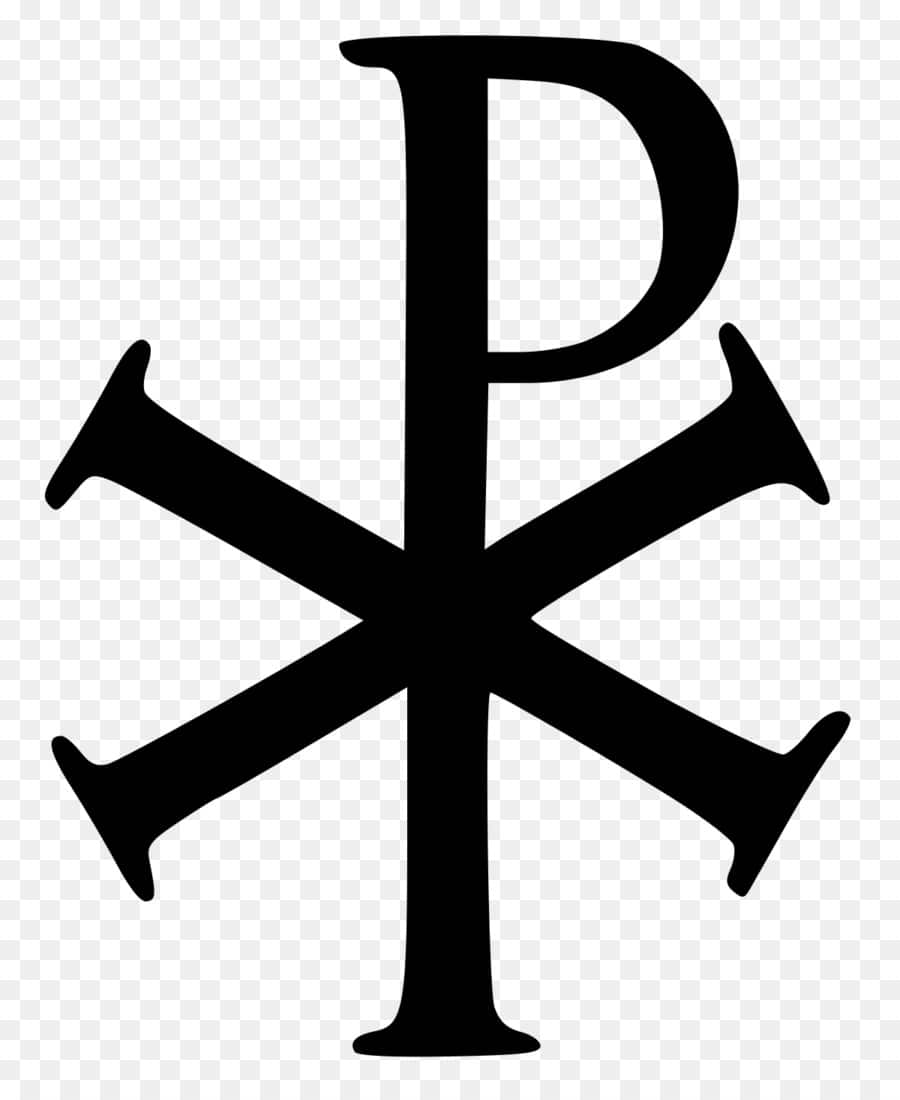
However, the symbol of Chrimson was not only used during the time of the Roman Emperor Constantine I and later, there is some evidence that the symbol was used by Christians much earlier.
According to some sources, the symbol was also used in pre-Christian times as an abbreviation of “chreston”, which means “useful”. According to this version, this abbreviation was written in the margins of the pages to indicate interesting passages to be studied later.
Despite the great popularity of this Christian symbol in its early days, especially during the war campaigns of the Roman Emperor Constantine I, it gradually lost popularity as the generations passed.
In our time it is difficult to see Christians using it, in fact many Christians of our time do not know it, and mostly it is known within Catholic Christianity, and I do not mean that all Catholic believers know it, but their priests know what symbol it is and when it was used, although they do not use it much now.
The Dove
The symbol of the dove, technically this is one of the classic symbols of Christianity for many reasons. The dove is mentioned in several biblical passages, especially in the Gospels relating to the baptism of Jesus Christ. In the Gospel of Luke we can read the following
“And the Holy Spirit descended upon him in the form of a dove; and a voice came from heaven, saying, “You are my beloved Son; I am well pleased with you”. (Luke 3:22)
So, based on what the Gospels say, for Christians the dove has been a symbol of the Holy Spirit and also a symbol of peace. This symbolism has often been reflected in some of the religious art of Christianity.
However, the Gospels are not the only places where the dove appears as a symbol of peace or hope, because it also had its part in the Book of Genesis, when Noah kept sending a dove to check if the waters had subsided, and if the dove returned to the ark with nothing, it meant that the world was still in water, and if it returned with a leaf or something, it meant that the waters had subsided on the face of the earth. In the book of Genesis we can read the following:
“And the dove returned to him in the evening, and, behold, it brought an olive leaf in its beak: and Noah saw that the waters were withdrawn from the face of the earth. (Genesis 8:11).
In this part of the Book of Genesis, Noah sent a dove to look for dry land to see if the world was still under water or not. After several attempts, the dove returned with an olive branch. Noah understood that this was the final proof that the dove had found land and that it was possible to live in peace with nature again after the universal flood. In this sense, the dove with the olive branch is a symbol of peace.
Thus we can see that the dove is not only a symbol or representation of the Holy Spirit of God, but also an irrefutable symbol of peace, which is used so often in the audiovisual media as a symbol of peace for the world.
The alpha and the omega
The symbols for alpha (α or Α) and omega (ω or Ω) are as important as those for the cross or the fish. They are the first and last letters of the Greek alphabet. The Alpha and the Omega are intertwined with the beginning and the end, so they represent the eternal nature of God, that is, He is the beginning and the end.
In the Bible we can find several verses in the Book of Revelation or the Apocalypse that refer to the symbol of the Alpha and the Omega as God saying that He is the beginning and the end of all things. We will read one of these below:
“I am Alpha and Omega, the beginning and the end, says the Lord, who is, and who was, and who is to come, the Almighty” (Revelation 1:8).
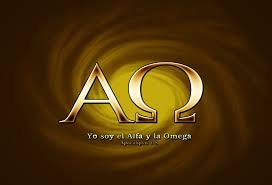
The history of Christianity shows that the Alpha and Omega symbol began to be used around the 4th century. This symbol is often used in depictions in combination with other Christian symbols, such as the chrismon, and on many occasions the chrismon was accompanied by the Alpha and Omega symbol.
Although it is a symbol based on Greek letters, it has historically been used more in the traditions of the Western Christian Church than in the Eastern Orthodox Church. Even today, the Alpha and Omega symbol has survived and continues to be used by a large number of Christian believers who firmly believe that God, as stated in Revelation 1:8, is the Beginning and the End, the Alpha and the Omega (see also: Christian liturgy).
Ancient symbols
There are a variety of ancient symbols, remember we said that the Christian religion partly took symbols from other ancient religions and made them their own. We will now look at a number of ancient symbols used by primitive Christians.
The peacock symbol: The symbol of the peacock is usually used to represent the immortality of the souls of people who believe in God. This symbol comes from the ancient belief that the flesh of the peacock does not decay after death.
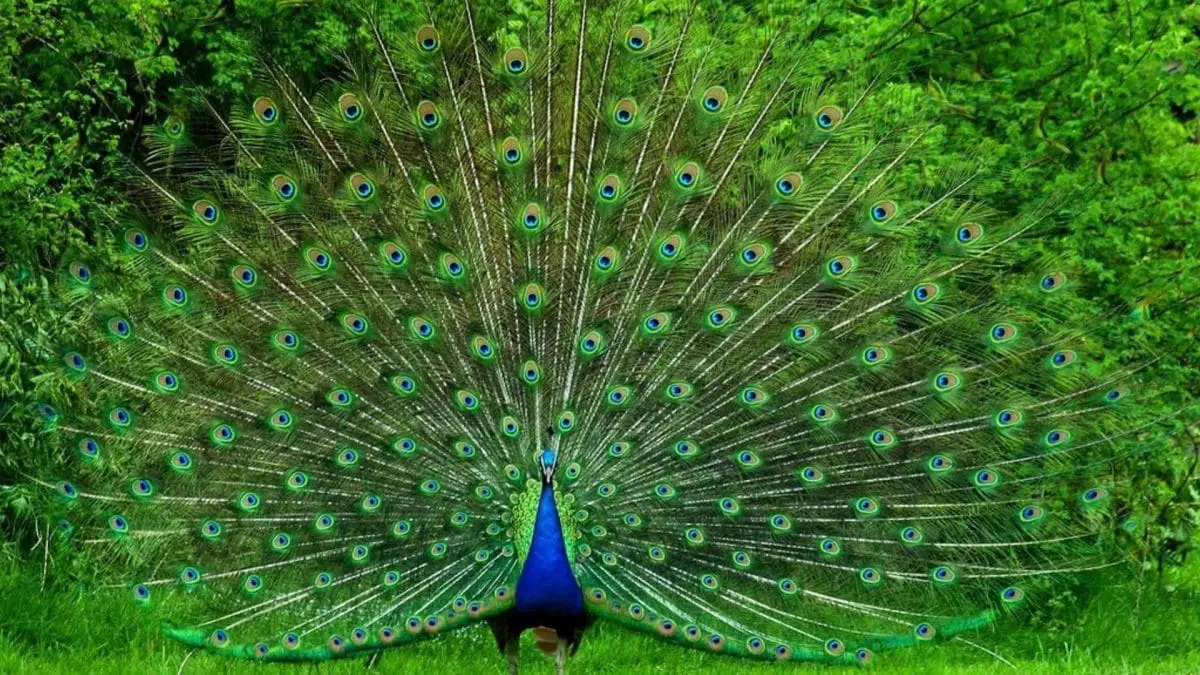
On the other hand, the eyes of the peacock’s feathers were used to symbolise the all-seeing eye of God. As the peacock changes its plumage every year, the symbol was also associated with the resurrection of Christ. On some occasions the peacock has been depicted drinking from a chalice to symbolise the source of eternal life.
The symbol of the peacock is most common in the art of the Orthodox Church and was also widely used in the medieval Catholic Church and has been maintained to the present day, although it is not very popular among Christians of that era, except among priests.
Protection
For any Christian who believes that God is omniscient, omniscient and omnibenevolent, it is not difficult to believe that he will protect them from any evil that might disturb their lives, not that this means that they will never be affected by misfortune, but they have the promise that God will always be with them.
There are symbols that refer to protection, such as the symbol of the anchor, or the symbol of the cross itself, and the belief that the blood of Christ protects them from all evil. So it is not difficult for a Christian who is faithful to the commandments of his heavenly Lord to believe that he will protect him in good times and in bad.
Remember that even Job, a righteous man in the eyes of God, was struck by misfortune, but because he remained steadfast in his faith in God, at the end of all the tragedy he received twice as much as he had.

Anti-Christian Symbols
Just as there are a number of Christian symbols used to commemorate important events in the Christian world’s past, there are also a number of anti-Christian symbols used to show the world their rejection of Christian principles.
The Horned Hand
One of the most widely used symbols, and one that is recognised worldwide as anti-Christian or satanic, is the horned hand. It consists of the index and little fingers being raised, while the middle and ring fingers are bent forward and the thumb holds the fingers in place. The ring and little fingers would then represent the devil’s horns and is seen as an obeisance to the god of evil.
Hexagram
The hexagram is one of the most common symbols used by those who practise any form of magic. The hexagram is very similar to the Star of David, except that in this case it is surrounded by a circle. It is a way of recognising the power and dominance of Lucifer over those who support him from the shadows.
Inverted Pentagram
The inverted pentagram is another classic anti-Christian symbol, as it symbolises the morning star, a name Satan has taken for himself. It is most commonly used in witchcraft and occult rituals to summon evil spirits. It can be in a circle or not, either way it represents Satan.
The A for Anarchy
A symbol widely used and adopted, especially by young people, the A for Anarchy is a classic and means to abolish all laws, but more than abolish, it means to be against the laws. In other words, “do what you want”. This is the law of Satanists. Used by punks and rockers and heavy metal fans. Although we have to make the caveat that although metal usually reflects a contradiction to the laws, what many lyrics mean is that people should have their own criteria to consider what is right or wrong, and that the laws are not always right.
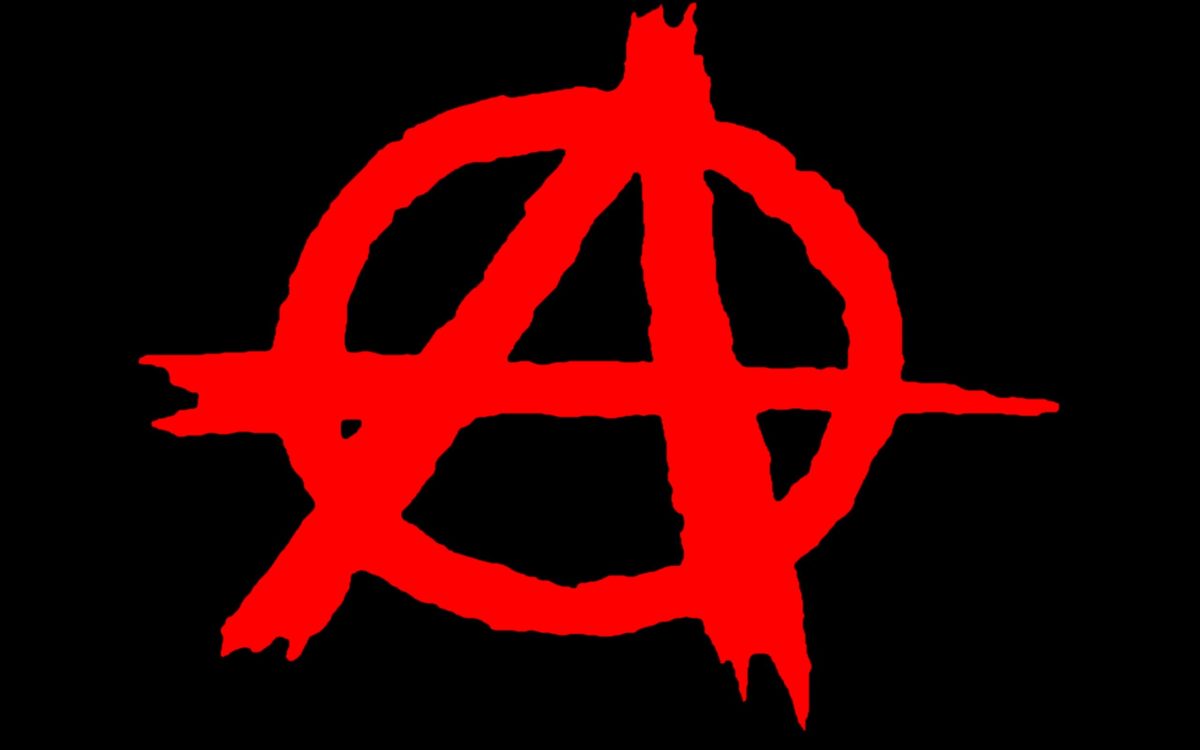
The Zodiac
This may be controversial, but many believe that the Zodiac has been used in occult Satanic worship from Babylonian times to the present day. Practitioners of the “zodiac arts” ignore that the god behind it all is Baal. Baal is Lucifer or Satan. This includes zodiac signs as a means of contacting beings from other dimensions.
The Pentagram
The famous pentagram, I think this one is more classic than any of the others. It is a symbol used in witchcraft that represents the elements of earth, wind, fire and water with the spirit that surrounds them. The pentagram also represents man, very much used to summon spirits.
666
Ok, I said the previous one was the most classic of all, but I lied, this one surpasses all the others. The symbol of the Beast is even mentioned in the Christian Bible as the official symbol of Lucifer, and that all those who allow themselves to be marked with the number of the Beast after the rapture of the Christians will lose all hope of being saved, while those who refuse to be sealed with the number of the Beast will have a minimal chance of being saved.
Inverted Cross
Remember that the inverted cross appears above as a Christian symbol, and I mentioned that this symbol causes some controversy because it is also used by Satanists to show their rejection of any Christian principle.
People who sympathise with Satan usually use this cross as a necklace. It should be mentioned that not all metal singers wear an inverted cross, except for those who are personally against Christians. Not everyone who wears an inverted cross means that they are Satanic.
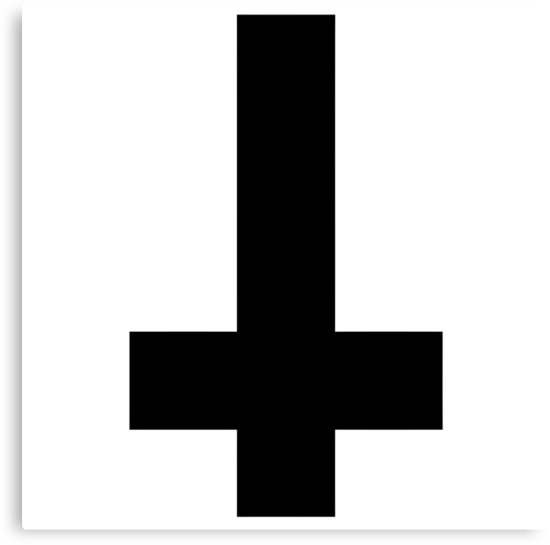
The inverted cross is not a symbol of power, it is only a form of identification that confirms the mockery of the One who was crucified “to save the world”. It is the equivalent of carrying a doll of a president and burning it in a square, or the equivalent of burning the flag of a neighbouring country.
Peacock
Peacocks are a species of bird that has captured the imagination of mankind for thousands of years. Even the attention of Christians has not been diverted from the beautiful sight of a peacock. King Solomon was famous for owning peacocks as a symbol of his great wealth, or so we read in 1 Kings 10:22. (See also: Religious persecution).
With the passage of time and the observation that the peacock’s skin did not decay as quickly as that of other birds, theories and some beliefs began to emerge that the peacock’s skin was incorruptible and remained in good condition even after death (a brief allegory of immortality).
St. Augustine put this theory to the test and was surprised at how long it lasted, as he reveals in The City of God: “After more than thirty days we found it in the same way, and after a year in the same way, except that its volume had diminished, for it was already dry and wiry”.
The results of this observation led many cultures of the ancient world to regard the peacock as a symbol of immortality and, in the case of Christians, as a reminder of paradise. The peacock’s feathers, which shed each year to make way for new ones, further solidified the association and added a spiritual symbol of resurrection. In addition, the eye-shaped pattern in the peacock’s plumage reminded Christians of God’s all-seeing eye.
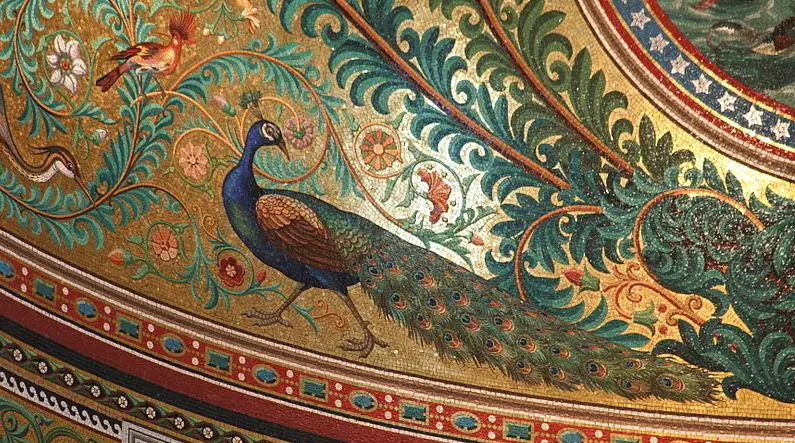
For these reasons it was very common to find images of peacocks, or the birds themselves, in Christian temples and catacombs (when they had to worship in secret), and they were prominently represented in tombs, as a perfect allegory of eternal life and the immortality of the soul.
The Vine
In the Old Testament it is mentioned that the vine represents the people of Israel, at least that is what we read in Psalm 80:8-9, because it is the beloved and protected people of the Lord, but because of their pride, stubbornness, idolatry and continuous disobedience, they became a wild vine, producing only sour grapes, says Isaiah: 5.
On the contrary, we can read in the New Testament that the state of the vine passes from the people of Israel to Jesus, the Son of God, sent for the forgiveness of sins. Christ himself says: I am the true vine; Jesus is the true vine because he fulfilled what God had for Israel, that is, he did all that God the Father had commanded him. Israel’s place as God’s people is now taken by Jesus (the vine and his disciples the weapons).
So we can say that the people of Israel are no longer connected or related to God by Jewish blood, but now by their relationship with Jesus. The old community ceases to exist in order to establish a new one: the relationship of Jesus with his disciples and with us. It is our relationship with Jesus that connects us to the vine of God.
Christian Funeral Symbols
Many of the symbols that we have normally seen in the Christian religion are also very common in their funerals and in the graves of their deceased who were believers in life, so we will now talk a little about these symbols.
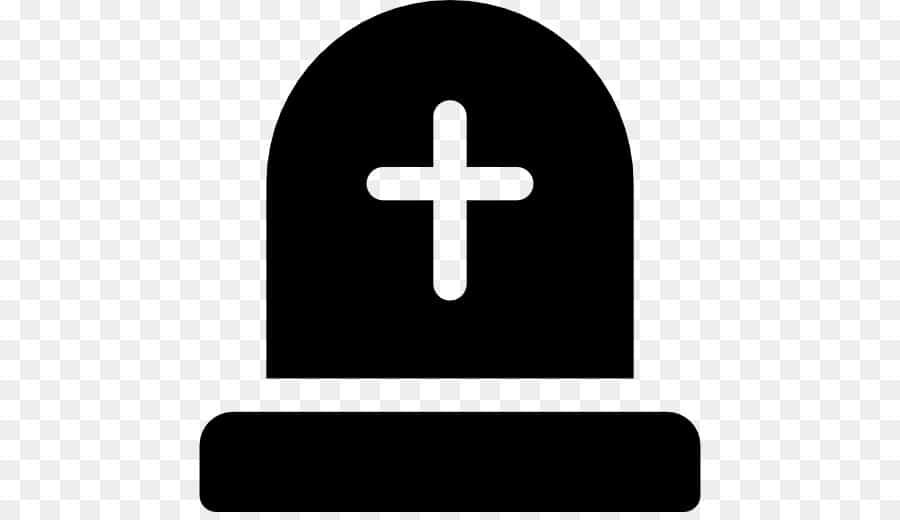
Christian cross
The cross is the most representative Christian symbol, we see it in churches, on people’s necks, on cars, some people get it tattooed and we also see it on the graves of the deceased. Crosses are a prominent feature of Christian cemeteries, either engraved on tombstones or as funerary monuments. We can find them alone, with a crucified Christ, representing the resurrection, or with him, symbolising his suffering at the time of death.
Star of David
On the other hand, we have the 6-pointed Star, or as it is more commonly known, the Star of David. It is a sign directly related to the spiritual potential of each person and also a symbol of the human soul as such, which seeks to express the conjunction of the conscious and the unconscious through the meeting of the triangle, which alludes to fire, and the inverted triangle, which evokes water, in one of the many interpretations of this symbol.
Orthodox cross
The Orthodox cross is a variant of the general Orthodox cross, one of its main characteristics being that the lower crossbar is inclined. One of its ends is slightly raised: it is interpreted as pointing to heaven, towards which the crucified thief went with Christ, begging for mercy. The other end, on the other hand, points downwards: towards Hell, the place destined for the other thief who defied Jesus Christ.
Luther’s Rose
The Lutheran Seal, or as it is also known, Luther’s Rose, was a type of cross designed by Martin Luther himself when he was in the fortress of Coburg. Initially, Luther used it as a seal to mark his letters, but over time the cross quickly became a symbol of Protestant Christianity.
On gravestones, a shorter version of the Lutheran rose is often seen as a cross in a heart. The full symbol represents a black and mortified cross within a red heart, referring to faith in the crucified Christ who saved us.
It is also important to note that these symbols are in turn set within a white rose, chosen as the colour associated with angels and spirits, representing joy, consolation, love and peace. This flower, in turn, is fixed on a blue background, representing the sky, and all of them are inside a golden circle, representing that there is no end to heavenly bliss. Undoubtedly one of the best Christian symbols and one with a lot of meaning.
Angels
In the Bible, angels have always been seen as God’s messengers, communicating with man to deliver a specific message, although in the Old Testament they are also seen as defenders of eternity and great celestial warriors. They are usually depicted holding a scroll or the Holy Scriptures, as well as a 5-pointed Star (a holy symbol in Christianity, representing God and the Devil, among other things).
Skull
Normally the skull is associated with evil and death itself, and yes, normally it represents that, but it also symbolises the transience of earthly life and criticises human vanity; on the other hand, we can appreciate that when we see a skull, we do not see thinness or fatness, black or white, it speaks of the equality of all in the face of death. The skull with wings or bones symbolises the soul that has left the body and is on its way to another life. In short, it is the triumph over death and is also linked to the concept of memento mori.
Butterfly
The butterfly on a tomb makes a strong reference to resurrection. Given that the butterfly goes through different stages: caterpillar, chrysalis and butterfly, Christians associate it with life, death and resurrection. As well as being attracted to light, it symbolises the Christian soul. Quite an emblematic meaning.
The torch
The torch has been used in tombs for thousands of years, and the reasons for its use can be many and varied. They can be lit, extinguished, smoking, pointing upwards or downwards, depending on the final wishes of the person or their relatives. In any case, the first three slopes represent the brevity of life.
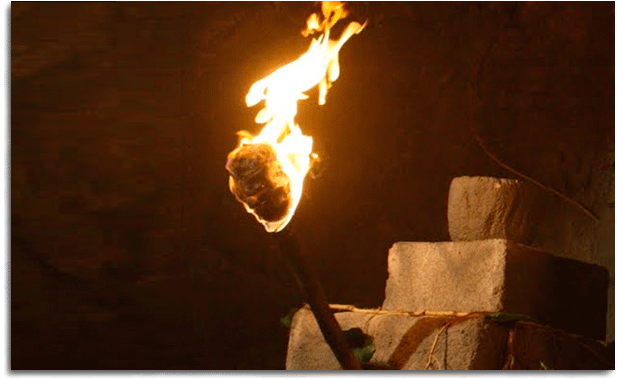
There are those who have decided to give a different meaning to the torches that go up, saying that they can represent the world of the living, while if we find the torch down, they symbolise the world of the dead.
Christian symbols in early Christian art
It is said that the catacombs were the first cemeteries of the early Christians. They were underground galleries, several kilometres long, which became large labyrinths, where not only the bodies of the martyrs were buried, but also some rites and cults of worship were performed for some of his martyrs. This is why we usually find small altars.
The construction of these catacombs began in the 2nd century. Many of them were excavated and extended around the tombs of the villas of important Roman families, whose owners, recently converted to Christianity, opened them not only to their relatives but also to their brethren in the faith. With the Edict of Milan in 313, the persecution of Christians ceased and they could begin to build churches and acquire land for new cemeteries. However, the catacombs remained in use until the 5th century. In these catacombs we can find a variety of ancient symbols such as the following:
The Good Shepherd: This is an image of a man carrying a sheep on his shoulder, representing Christ the Saviour and the soul he has saved. The meaning is well explained in the Gospel, Jesus is the Shepherd and all his disciples of all times are his sheep and he knows each one of them by name from before the foundation of the world.
In the image we see the shepherd carrying the lost sheep on his shoulders. This image can be used to interpret the departure from this world: that is why it is often found in frescoes, on the reliefs of sarcophagi and engraved on tombs.
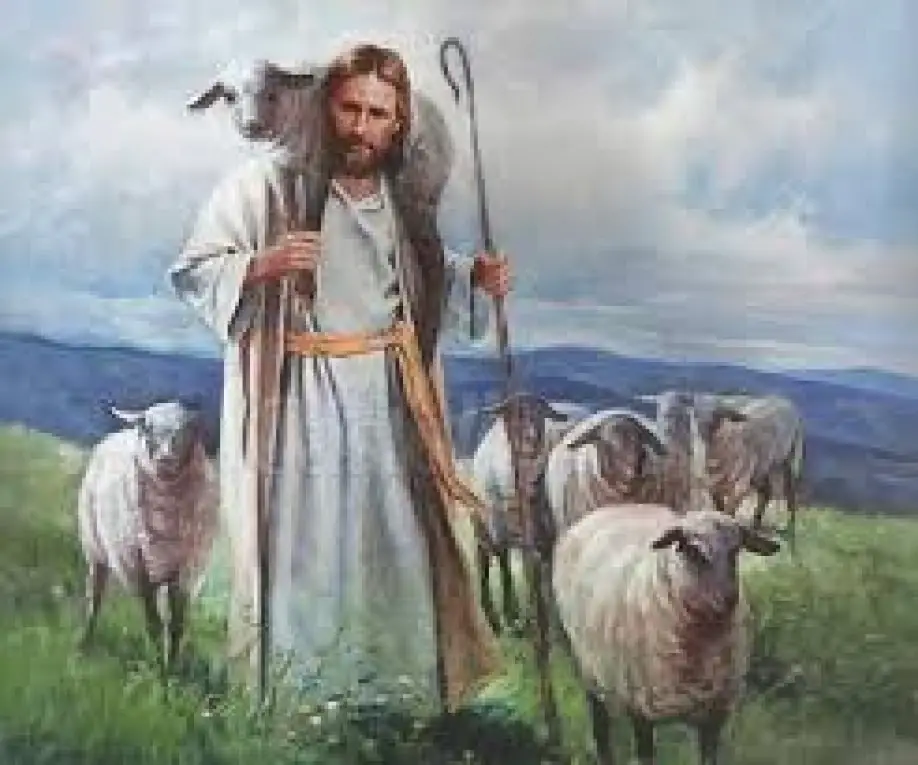
The praying woman: this is a figure dressed in a tunic with wide sleeves and with her arms raised in prayer, the “piety” for Christians, symbolising the soul enjoying heavenly bliss, interceding for those who remain. Remember that the Bible says that when we pray for our sins, Jesus Christ intercedes for us before the Father.
The Chi Rho: is a monographic symbol of Christ, made up of two letters of the Greek alphabet: the X (ji) and the P (ro) superimposed. They are the first two letters of the Greek word “Christòs”, that is, Christ. This monogram, placed on a tomb, shows all those who pass by his grave that he was a Christian, and even today this symbol is often found on churches and altars.
The Fish: The Greek word for fish is “IXTHYS” (Ijzýs). If they are placed vertically, they form an acrostic: “Iesús Jristós, Zeú Yiós, Sotér”, which translates as: Jesus Christ, Son of God, Saviour. For this reason, the fish symbol is very popular and is also used on the graves of the Christian dead.
The tree: The tree is another recurring Christian symbol in Christian cemeteries, this symbol represents life growing from the earth to the sky with leaves, fruits, flowers, evidence of its vitality. These are symbols of the earthly life which tends towards the life of “heaven”, towards the resurrection. This means that the soul of the deceased Christian goes to heaven.
The dove: Apart from being a symbol of peace and love, the dove also symbolises the soul that has reached divine peace after death, but it also symbolises the salvific intervention of God, the Holy Spirit, the soul of the deceased and peace.
The Phoenix: a mythical bird originally from Arabia, believed to be able to rise from its ashes after a certain number of centuries, it is the symbol of resurrection.
The boat: this is a representation of the Church, the archetype of Noah’s Ark, a means of salvation for the rest of Israel, represented by the patriarch and his family.
The boat is used to represent an object of salvation, a salvation that comes directly from God, thanks to the miraculous intervention of Jesus, leading to the safe haven of the Messianic Kingdom. It is a means of salvation for those who are inside it, making a very clear point: “Outside the Church there is no salvation”.
Catacombs
The Christians of ancient Rome did not agree with the custom of cremating the bodies of their deceased, they considered it a pagan practice, so to solve the problems of space and the high cost of land, they decided to create these vast underground cemeteries.
The catacombs became the new way of burying the dead and ended up as underground galleries, forming authentic labyrinths of several kilometres, along which several rows of rectangular niches were excavated.
The corpses were wrapped in a sheet and placed in the niches and then sealed with marble tombstones, although terracotta was more commonly used. The name of the deceased was engraved on the lid, together with a Christian symbol. Christian rites were also performed in the catacombs, as they were persecuted at the time (see also: Beliefs of Christianity).
Christian symbols at weddings
Christian weddings usually include a number of symbols that convey peace, love, forgiveness and gentleness. This is the case of the dove itself, the Christian cross, the angel and, if we are referring to something else, we can think of the couple’s rings, the wedding dress or the bride’s veil. Each one has a meaning of union, purity and love.
Christian symbols tattoos
The cross: We could not miss one of the most famous Christian symbols in history. The cross is one of the most tattooed Christian symbols and it is because its meaning is so vast and varied that people leave it to free interpretation, but mainly the cross is a reminder that Jesus Christ died for us on the cross of Calvary.
The Virgin Mary: Technically the mother of Jesus Christ, for many Christians the Virgin Mary is of vital importance within the Christian world, some even believe that she intercedes for us before God, she is another of the most tattooed images.
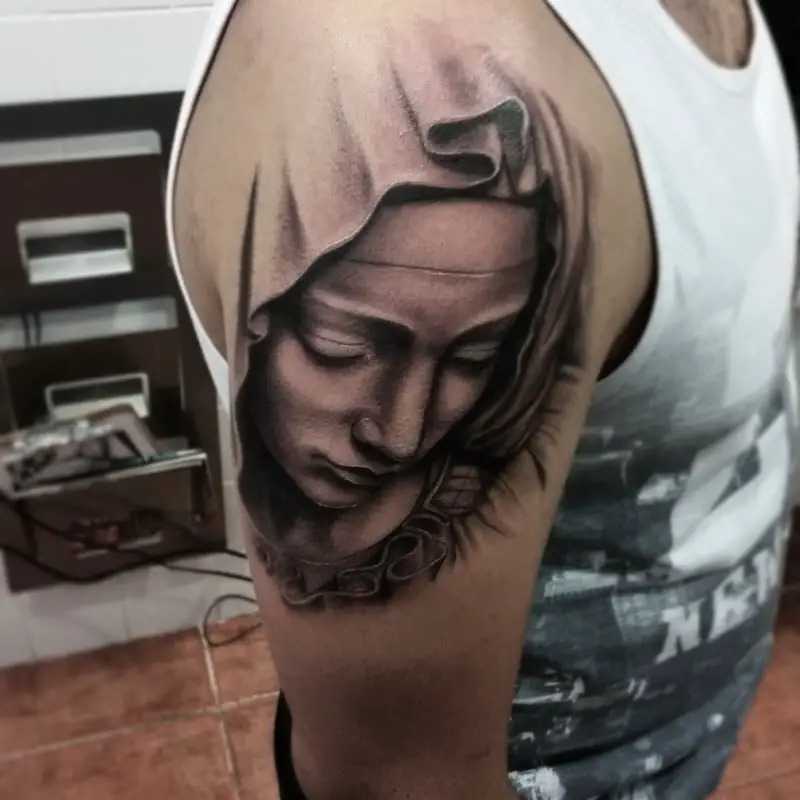
The Dove: The dove usually represents peace, love and the Holy Spirit of God, but it also represents the liberation of the soul from the mortal body to a spiritual and heavenly plane. For this reason, it is one of the most commonly used tattoos by believers who get tattoos.
Death: This may sound contradictory, but yes, there are believers who usually tattoo Death on their bodies, but not Death alone, but Death with a cross on it or nailed to it, symbolising that Jesus Christ defeated it in the tomb when he rose on the third day.
Archangels: Let us remember that the archangels are very powerful celestial beings who, when Lucifer’s rebellion happened, were God’s elite to defeat him. One of the most famous is the Archangel Michael, who people use as a protective figure. He is one of the most requested tattoos by believers.
Rosary: Rosaries are mostly used by Catholic believers to pray. The thing is that these rosaries are usually requested for tattoos, although they are almost never tattooed alone, they are always accompanied by the Virgin Mary or another representative Christian symbol.
Christian Christmas Symbols
Christians also have a number of symbols that they usually use when Christmas comes, so that they can more clearly remember the birth of the Child God, the God who came to save the world and fulfilled his mission by dying on the cross for the forgiveness of sins.

The Magi
The Magi were priests who practised the religion of Zoroaster (one of the oldest religions in the world, who was a prophet of ancient Persia). Their names were Melchior, Gaspar and Balthazar, and tradition has it that they came from the East guided by a star, the Star of Bethlehem, which led them to the newborn baby Jesus, whom they worshipped and offered gold, frankincense and myrrh.
The star
Another of the Christian symbols of Christmas is the star, which is placed at the top of the Christmas tree and is believed to represent the eternal firmament, the place where divinity and faith are found, values that guide every Christian, recalling the star of Bethlehem that illuminated the path of the Magi. It symbolises hope and light for a better life.
The bells
The symbol of the bells is ancient, given that the Mosaic Law prescribed that the lower part of the tunic of the High Priest of the Temple should be decorated with bells alternating with drawings of pomegranates. The purpose of this was that such a person should be heard from afar.
Because of the purpose of the bells for the priest, the bells hung on doors, windows or branches of the tree represent the warning to the people of the birth of the child Jesus and the joy of such an event. In the past, it was said that they were used to ward off evil spirits.
